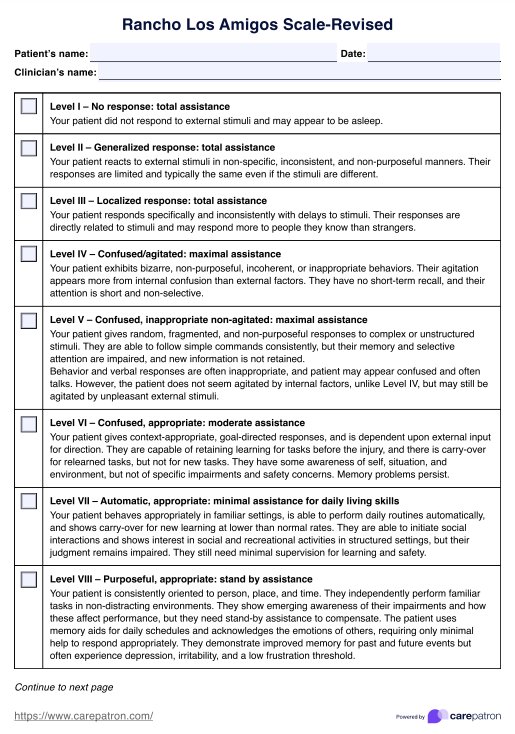The Rancho Los Amigos Scale assesses cognitive and behavioral functioning in brain injury patients recovering from traumatic brain injury (TBI) or other head injuries. It helps healthcare professionals monitor recovery, develop care plans, and guide interventions based on the patient’s cognitive level.

Rancho Los Amigos Scale
Use the Rancho Los Amigos Scale to assess the cognitive functioning level of a patient recovering from a coma. Use it in practice today.
Rancho Los Amigos Scale Template
Commonly asked questions
The Glasgow Coma Scale evaluates a patient’s level of consciousness through eye, verbal, and motor responses, often used during the acute phase after a brain injury. In contrast, the Rancho Los Amigos Scale focuses on cognitive recovery and behavioral responses, helping assess long-term progress and functioning throughout the rehabilitation process.
There are ten levels on the Rancho Los Amigos Scale's revised version, ranging from Level I: No Response (total assistance) to Level X: Purposeful, Appropriate (modified independent). Each level reflects the patient's cognitive and behavioral progress, from no response to independent functioning with occasional compensatory strategies.
EHR and practice management software
Get started for free
*No credit card required
Free
$0/usd
Unlimited clients
Telehealth
1GB of storage
Client portal text
Automated billing and online payments











